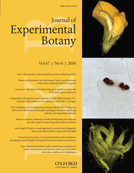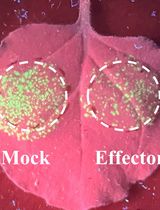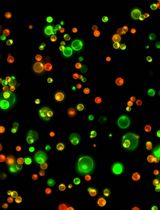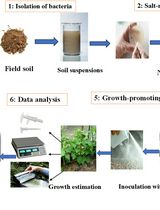- EN - English
- CN - 中文
Quantification of Salicylic Acid (SA) and SA-glucosides in Arabidopsis thaliana
定量测定拟南芥中的水杨酸(SA)和SA糖苷
发布: 2018年05月20日第8卷第10期 DOI: 10.21769/BioProtoc.2844 浏览次数: 13054
评审: Marisa RosaJohn V. DeanRekha R. Warrier
Abstract
Homeostasis between the cytoplasmic plant hormone salicylic acid (SA) and its’ inactive, vacuolar storage forms, SA-2-O-β-D-glucoside (SAG) and SA-β-D-Glucose Ester (SGE), regulates the fine-tuning of defense responses to biotrophic pathogens in Arabidopsis thaliana. This protocol describes a simplified, optimized procedure to extract and quantify free SA and total hydrolyzable SA in plant tissues using a classical HPLC-based method.
Keywords: Salicylic acid (水杨酸)Background
SA (2-hydroxybenzoic acid) is a plant hormone, which is synthesized in the chloroplast in response to pathogen attack. It is then exported to the cytoplasm, where it establishes both local and systemic-acquired resistance (SAR). In a generalized scheme, plant resistance to biotrophic pathogens is thought to be mediated through SA signaling, whereas resistance to necrotrophic pathogens is controlled by jasmonic acid (JA) and ethylene (ET). SA and JA/ET signaling pathways interact antagonistically. SA accumulation to high concentrations is toxic and leads to cell- and tissue damage. Most pathogen-induced SA is thus glycosylated by UDP-glucosyltransferases (UGTs) to form hydrophilic, non-toxic SAG and SGE (Noutoshi et al., 2012; George Thompson et al., 2017). SAG and SGE are then sequestered in vacuoles, where they form reusable sources for hydrolysis to active SA. Increasing amounts of total SA (SA + SAG/SGE) in plant tissues thus reflect SA synthesis as a response to biotrophic pathogen attack. However, the amplitude of defense responses in infected plant tissues is determined by the amount of available cytoplasmic, unconjugated SA. To evaluate both the onset of SA-dependent defense responses and their amplitude, it is essential to quantify free and conjugated SA, respectively. This article describes a method for measuring conjugated and unconjugated SA levels in phase-partitioned extracts from A. thaliana seedlings. It is based on a protocol established for SA analysis in cucumber leaves (Meuwly and Métraux, 1993), which we optimized and downscaled for convenient, routine use.
Materials and Reagents
- Pipette tips
- Nitrile gloves
- Microcentrifuge tubes (2 ml) (e.g., Thermo Fisher Scientific, Thermo ScientificTM, catalog number: 69720 )
- Centrifuge tubes (15 ml) (e.g., Corning, catalog number: 430791 )
- Microcentrifuge Tube Locks (LidLocksTM, VWR, catalog number: 14229-941)
Manufacturer: Sorenson Bioscience, catalog number: 11870 . - Glass wool (e.g., Sigma-Aldrich, catalog number: 18421 )
- Ten-day-old Arabidopsis thaliana seedlings (e.g., different genetic wild-type or mutant backgrounds, inoculated with pathogen or otherwise treated)
- Liquid nitrogen
- Ethanol (EtOH; e.g., Sigma-Aldrich, catalog number: 24103 )
- 70% aqueous EtOH (v/v)
- Methanol HPLC grade (MeOH; e.g., CARLO ERBA Reagents, catalog number: 412383 )
- 90% aqueous MeOH (v/v)
- Trichloracetic acid (TCA; e.g., Sigma-Aldrich, catalog number: T9159 )
- 20% aqueous TCA (w/v)
- Ethyl acetate, analytical grade (e.g., CARLO ERBA Reagents, catalog number: 448256 )
- Cyclohexane, analytical grade (e.g., CARLO ERBA Reagents, catalog number: 436903 )
- A mixture of ethyl acetate and cyclohexane (1:1, v:v)
- Trifluoracetic acid (TFA; e.g., Sigma-Aldrich, catalog number: T62200 )
- 10% aqueous MeOH (v/v) with 0.1% TFA (v/v)
- 82% aqueous MeOH (v/v) with 0.1% TFA (v/v)
- Concentrated hydrochloric acid (HCl; 37%, 12 M; e.g., Sigma-Aldrich, catalog number: 30721 )
- Ultra-pure water
- 2-Methoxybenzoic acid, o-Anisic acid (OAA; e.g., Sigma-Aldrich, catalog number: 169978 )
- Sodium salicylate (e.g., Sigma-Aldrich, catalog number: S3007 )
- o-Anisic acid 50x stock solution (see Recipes)
Equipment
- Micropipettes (e.g., Gilson, model: P2 , P20 , P200 , P1000 )
- Mortar (40 ml content) with pestle
- Fume hood
- Water purification system (Merck, EMD Millipore, catalog number: SYNS0HFWW )
- Vortex (e.g., IKA, model: MS 1 minishaker )
- Dry bath heating block for 2 ml microcentrifuge tubes (e.g., Major Science, model: EL-02 )
- Vacuum concentrator (e.g., Thermo Fisher Scientific, Thermo ScientificTM, model: Savant SpeedVac Concentrator )
- Vacuum pump (e.g., BÜCHI Labortechnik, model: V-300 )
- Microcentrifuge (e.g., Eppendorf, model: 5415 D with Rotor: Eppendorf, model: F45-24-11 )
- C18 HPLC column (e.g., Inertsil 5 ODS3, 5 µm, 250 x 4.6 mm i.d., Interchim, France) (GL Sciences, model: Inertsil® ODS3 )
- HPLC System (Shimadzu Prominence LC System) equipped with:
2 solvent delivery units (Shimadzu Scientific, model: LC-20AD )
A system controller (Shimadzu Scientific, model: CBM-20A )
An autosampler (Shimadzu Scientific, model: SIL-20AC )
A column oven (Shimadzu Scientific, model: CTO-20A )
A diode array detector (Shimadzu Scientific, model: SPD-M20A )
A fluorescence detector (Shimadzu Scientific, model: RF-10AXL )
Software
- Chromatography data system software (e.g., WATERS, Empower 3 Pro Chromatography Data Software)
- Microsoft Excel
Procedure
文章信息
版权信息
© 2018 The Authors; exclusive licensee Bio-protocol LLC.
如何引用
Allasia, V., Industri, B., Ponchet, M., Quentin, M., Favery, B. and Keller, H. (2018). Quantification of Salicylic Acid (SA) and SA-glucosides in Arabidopsis thaliana. Bio-protocol 8(10): e2844. DOI: 10.21769/BioProtoc.2844.
分类
植物科学 > 植物生物化学 > 植物激素
植物科学 > 植物免疫 > 宿主-细菌相互作用
生物化学 > 其它化合物 > 植物激素 > 乙烯
您对这篇实验方法有问题吗?
在此处发布您的问题,我们将邀请本文作者来回答。同时,我们会将您的问题发布到Bio-protocol Exchange,以便寻求社区成员的帮助。
Share
Bluesky
X
Copy link













